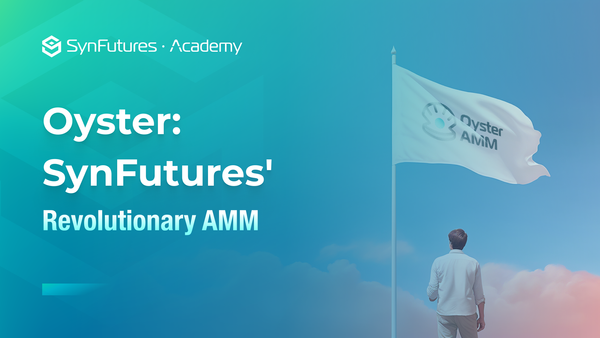The Blockchain Trilemma: Security, Scalability, and Decentralization in Web3
What is the Blockchain Trilemma?
The blockchain trilemma refers to the three interdependent aspects of a blockchain system that are difficult to optimize simultaneously: security, scalability, and decentralization. In other words, it is a trade-off between these three key characteristics that make it challenging to achieve a blockchain that is highly secure, highly scalable, and highly decentralized at the same time.
Security
The security aspect of the blockchain trilemma is crucial to the success and adoption of blockchain technology. A blockchain system with weak security measures is vulnerable to various types of attacks, fraud, and other malicious activities that can compromise the integrity of the network.
One of the most significant threats to blockchain security is double-spending, where a user spends the same digital asset twice. To prevent double-spending, blockchain systems use consensus algorithms such as Proof of Work (PoW) or Proof of Stake (PoS) to validate transactions and ensure that they are added to the blockchain only once.
Sybil attacks are another form of attack that can compromise blockchain security. A Sybil attack occurs when a single entity creates multiple identities or nodes on the network, giving it disproportionate control over the network. To prevent Sybil attacks, blockchain systems use mechanisms such as Proof of Work and Proof of Stake, which require users to demonstrate a significant amount of computational power or stake in the network to participate in consensus.
A 51% attack is yet another threat to blockchain security. In a 51% attack, a malicious user or group of users controls more than half of the network's computational power, allowing them to manipulate the blockchain's transactions and data. To prevent 51% attacks, blockchain systems use consensus mechanisms that make it computationally infeasible to control a majority of the network's computational power.
In summary, a highly secure blockchain must have robust mechanisms in place to prevent double-spending, Sybil attacks, 51% attacks, and other forms of malicious behavior. Without adequate security measures, blockchain systems cannot achieve the trust and credibility necessary for their widespread adoption.
Scalability
Scalability is a crucial aspect of the blockchain trilemma that is essential for the widespread adoption of blockchain technology. As blockchain usage continues to grow, it is essential that blockchain systems can handle an increasing number of transactions without sacrificing performance or causing network congestion.
A highly scalable blockchain system should be capable of processing a large volume of transactions quickly and efficiently. To achieve high levels of scalability, blockchain systems use various techniques such as sharding, sidechains, and off-chain transactions. Sharding involves breaking down the blockchain into smaller, more manageable parts or shards, allowing for parallel processing of transactions, while sidechains allow for the creation of separate blockchains that can interact with the main blockchain.
Off-chain transactions are another technique used to improve scalability. Off-chain transactions refer to transactions that occur outside of the main blockchain, reducing the number of transactions that need to be processed on the main chain. These transactions are validated by a small group of nodes or a trusted intermediary, reducing the computational load on the network and improving transaction throughput.
Low transaction fees are also a crucial aspect of blockchain scalability. High transaction fees can make blockchain systems less attractive to users, particularly for small transactions. To improve scalability, blockchain systems use various fee structures, such as dynamic fees, to ensure that users are charged reasonable fees that reflect the actual cost of processing their transactions.
In summary, scalability is a critical aspect of the blockchain trilemma that determines the ability of blockchain systems to handle increasing transaction volumes while maintaining fast transaction times and low fees. Achieving high levels of scalability requires the use of innovative techniques such as sharding, sidechains, and off-chain transactions. By improving scalability, blockchain systems can become more efficient and attractive to users, leading to their widespread adoption.
Decentralization
Decentralization is a crucial aspect of the blockchain trilemma that is central to the philosophy and design of blockchain technology. Decentralization aims to create a system that is not controlled by any single entity or organization, allowing for greater transparency, security, and resistance to censorship.
A highly decentralized blockchain system is one that has a large number of nodes spread across the network, ensuring that no single node or group of nodes can control the network. Decentralized blockchain systems use consensus algorithms such as PoW, PoS, and Delegated Proof of Stake (DPoS) to validate transactions and maintain the blockchain's integrity.
Decentralization also ensures that blockchain systems are more resilient to attacks and other forms of manipulation. By distributing nodes across the network, blockchain systems can withstand attacks on individual nodes, ensuring that the network remains operational and secure.
However, achieving high levels of decentralization can be challenging, particularly as blockchain systems grow and handle increasing transaction volumes. As blockchain systems become more popular, it becomes more challenging to maintain a large number of nodes, which can lead to centralization and a concentration of power in the hands of a few large players.
Therefore, blockchain developers and architects must strike a balance between decentralization and scalability, ensuring that blockchain systems can handle increasing transaction volumes while maintaining a high level of decentralization.
In summary, decentralization is a crucial aspect of the blockchain trilemma that ensures transparency, security, and resistance to censorship. Achieving high levels of decentralization requires a large number of nodes spread across the network, which can be challenging to maintain as blockchain systems grow. Nonetheless, a highly decentralized blockchain system remains a core tenet of blockchain technology and is essential for its continued success and adoption.
The Trilemma Trade-off
The blockchain trilemma is a challenging trade-off that presents a significant hurdle for the widespread adoption of blockchain technology. Achieving high levels of security, scalability, and decentralization simultaneously is a daunting task, and any optimization of one aspect comes at the expense of the others.
For instance, prioritizing security often results in slower transaction speeds and higher transaction fees. This is because highly secure blockchain systems may require more significant computational resources to validate transactions and maintain the integrity of the blockchain, leading to longer confirmation times and higher transaction fees. In contrast, a focus on scalability may lead to decreased decentralization, as fewer nodes may be needed to handle a higher volume of transactions, which may result in a higher concentration of power in the hands of a few entities.
Moreover, achieving high levels of decentralization can also lead to trade-offs with security and scalability. Maintaining a highly decentralized network requires a large number of nodes spread across the network, which can increase network latency and reduce transaction processing speeds.
Therefore, blockchain architects and developers must navigate these trade-offs to find the optimal balance between security, scalability, and decentralization that aligns with the specific use cases and requirements of their blockchain networks.
In summary, the blockchain trilemma presents a significant challenge for blockchain technology, and achieving high levels of security, scalability, and decentralization simultaneously is a daunting task. Balancing these trade-offs is crucial to the success of blockchain systems and requires careful consideration of the specific requirements of each blockchain network.
Solutions to the Trilemma
To address the blockchain trilemma trade-off, various blockchain projects have sought innovative solutions to balance security, scalability, and decentralization in a more efficient way. Sharding, sidechains, and PoS consensus mechanisms are examples of such solutions.
Sharding involves dividing the blockchain into smaller partitions or shards, each of which can handle a subset of the total transaction volume. This can improve scalability without sacrificing security or decentralization. On the other hand, sidechains are separate blockchains that are connected to the main blockchain, allowing transactions to be processed on these sidechains, reducing the load on the main blockchain, and improving scalability without compromising security or decentralization.
Furthermore, PoS consensus mechanisms require validators to hold a certain amount of cryptocurrency as collateral, incentivizing them to act in the best interests of the network. This can improve security and decentralization while reducing the energy consumption associated with proof-of-work (PoW) mechanisms.
Despite the inherent difficulty in optimizing all three aspects of the trilemma simultaneously, the blockchain industry continues to explore new solutions to achieve higher levels of security, scalability, and decentralization. Finding the right balance between these key aspects is crucial for creating a reliable and sustainable blockchain network that meets the specific requirements of its intended use cases.
In conclusion, the blockchain trilemma highlights the trade-offs that must be made when designing and implementing blockchain technology. With ongoing research and development, the blockchain industry can continue to find innovative solutions that balance security, scalability, and decentralization to create robust and effective blockchain systems.
Discover SynFutures' crypto derivatives products: www.synfutures.com/.
Disclaimer: SynFutures Academy does not guarantee the reliability of the site content and shall not be held liable for any errors, omissions, or inaccuracies. The opinions and views expressed in any SynFutures Academy article are solely those of the author(s) and do not reflect the opinions of SynFutures. The SynFutures Academy articles are for educational purposes or information only. SynFutures Academy has no relationship to the projects mentioned in the articles, and there is no endorsement for these projects. The information provided on the site does not constitute an endorsement of any of the products and services discussed or investment, financial, or trading advice. A qualified professional should be consulted prior to making financial decisions.
*Not tax and/or financial advice. The SynFutures Newsletter is for educational purposes or information only.




